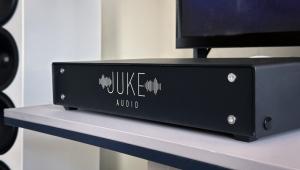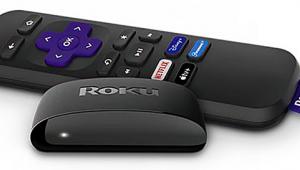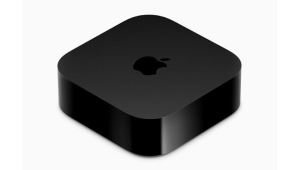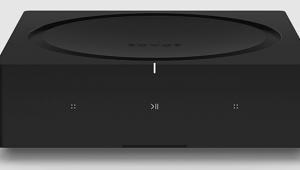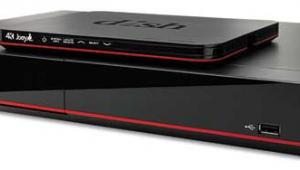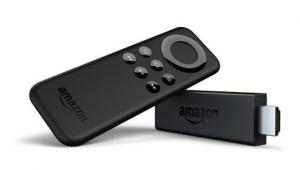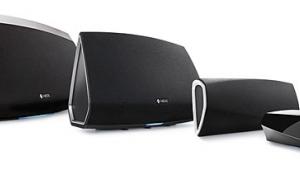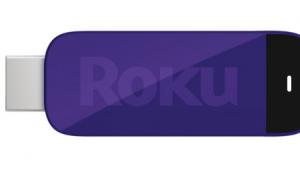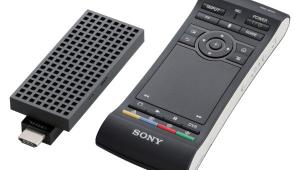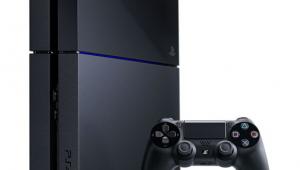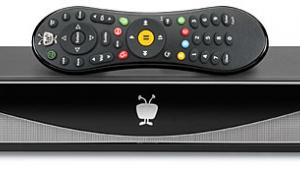Technics SA-C600 Streaming CD Receiver Review Page 2
Setup
While unpacking the C600, I marveled at its small size given its extensive functionality. Close inspection reveals some necessary compromises given its price point. For example, what appears at first glance to be metallic heatsink stripping on the chassis' top panel is actually made of plastic, as are the front and side panels. Still, the review sample's high build quality, handsome aesthetic, and overall polish and feel strongly belie its low price.
Included in the box with the C600 were a brief user's manual, the remote control, an AC power cord, and a thin FM antenna wire. A more detailed user manual can be downloaded from Technic's website.
Unlike many larger one-box players, when the C600 was placed on my bedroom credenza, it perfectly fit in front of my television. I used it with two stereo bookshelf speakers, one of which was Polk Audio's T15. The other was Technic's own SB-C600 ($999), which Technics states has a great synergy with the C600. In fact, the company sent a pair of SB-C600's along with the C600 review sample. To try the C600's subwoofer output, I connected to it a JL Audio Dominion d-110 subwoofer. I also connected to the C600 its FM antennae and a thumb drive containing music files.
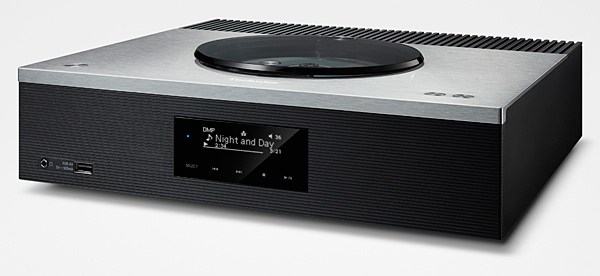
After downloading the Technics Audio Center app to my iPhone, it decidedly steered me towards using Chromecast, which I did. However, the C600 is fully functional without that platform. After following a few simple prompts and entering my LAN credentials, I signed into my subscribed streaming services, including Tidal and Spotify. I really liked the app, which in my experience operated flawlessly and was feature-rich, intuitive, and nicely laid out.
Finally, I turned my attention to Space Tune, which I was eager to test in my asymmetrically shaped room. I tried out the "Free" and "Corner" speaker location settings in the Technics Audio Center app to see if they made a difference. One speaker was near, but not entirely up against a corner. The other wasn't in a corner, but was on the same wall as and close to a shallow bookshelf, so the best setting wasn't obvious. Ultimately, I settled on "Free" for both speakers, which provided more bass output than the "Corner" setting. The resulting sound was full, natural, and organic. But, when the "Corner" option was selected for either speaker, the sound became a bit too thin. Of course, the results could have been different if I used other speakers, altered the speakers' placement, or experimented in a different room.
I ran Space Tune's test tones repeatedly and at different times of the day and night, to further adjust the speakers' output. Admittedly, I live in a very noisy urban environment. But each time, the software said that there was too much background noise in the room. Eventually, I moved on with the audition.
Performance
The C600 set a new standard in my listening room for what you can buy with a Cleveland. Nisha Lee's progressive house track "Dusty Bees," from the album Poised for the Future (16/44.1 FLAC Tidal), proved that this player can muster plenty of deep, linear bass. The track's hard-hitting beat and upper-frequency synthesized sounds were largely proportioned and set against a wide and deep soundstage. Also, the way these sounds popped off the backdrop confirmed that there was a very low noise floor. Even though the C600 has relatively low power ratings, it did not clip when the volume was turned all the way up. Indeed, it drove both the Technics and Polk speakers with aplomb.
Thankfully, despite the C600's authoritative nature, it could still do details and finesse. With "Chelsea Bridge" from Jerry Mulligan Meets Ben Webster (Masterworks Series CD), it clearly placed each of the artists' saxophones on opposite ends of the soundstage. Jimmy Rowles' piano notes and Mel Louis' drum strikes were just as clearly planted on the stage's left and right sides, respectively. Both saxophones sounded reedy, though Webster's tenor was noticeably warmer and earthier, while Mulligan's baritone was thicker and deeper in pitch. Piano notes, played pianissimo, maintained detail and, at least to the extent that the recording permitted, bore crystalline structures. The drum strikes, also subtle, displayed micro-skin resonances.
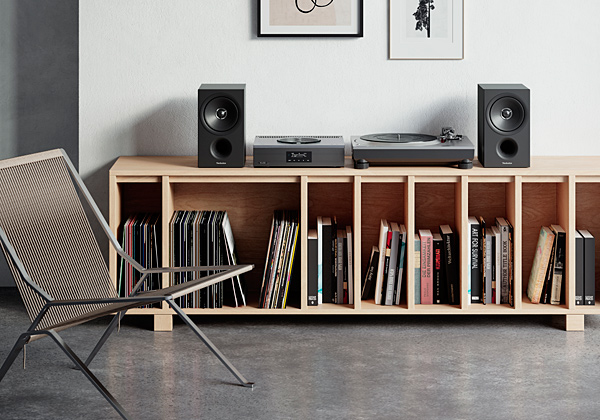
Then I tried the C600 Toslink input with my LG OLED television, which was fed by a Roku streamer. With the 2006 Casino Royale, the sound had the C600's large sonic footprint. Body blows, gunshots, and explosions were acceptably visceral, and the film score was convincing. However, at high volume, sometimes the sound was slightly shrill. Home theater fans who want the best performance will likely skip the Toslink input and go with HDMI. Still, having it on the C600 makes it more flexible and gives it a great alternative to a TV's built-in speakers.
At its price point, the C600's performance with stereo speakers is shockingly good. But that's not to say that it slays all competitors, regardless of price. Marantz's Model 40n ($2,500) has a warmer and slightly fuller sound. Also, like many one-box HDMI ARC (Audio Return Channel)-equipped players, it better handles movie soundtracks. NAD's C399 ($2548 as tested) plays louder before losing composure, and its M33 ($5,999) offers all-around superior performance. Still, at $999, the C600 is a proverbial "no brainer" that offers more value.
I didn't try the C600's phono stage, but I did use its headphone output to drive several cans, including Audeze' LCD-1. In the past, I've criticized many one-box players' headphone outputs as being little more than an afterthought. On Adel's "When We Were Young," from 25 (16/44.1 FLAC USB), the C600 caused the LCD-1 to nicely separate Adel's voice from the piano and other instruments with air and space. Though, as is common with many other one-box players, the presentation could have benefited from a bit more detail and transparency. Ultimately, the C600's headphone output performed similarly to half a dozen one-box players that I've recently had in house. The clincher? Those other players each cost between $2,500 and $3,500.
A few final words on the SB-C600 speaker. Given the coaxial driver/linear phase plug design and build quality for the money (there's 14 beefy ¼"-20 socket screws on each channel's rear enclosure panel!), it qualifies for its own review. Easy to position and able to play more loudly than it had any right to in my medium-sized bedroom; it pumped out large, clear, and detailed sound with more bass than I ever would have guessed. Undoubtedly, it's an excellent match for the C600
Conclusion
The SA-C600 may be inexpensive, but it's no dime-a-dozen one-box player. Its digital integrated amplifier, for example, could only be pulled off by a brand like Technics that's backed by a deep-pocketed parent, in this case, Panasonic. Even better, it proves that these days you don't have to pay a lot to get audiophile sound. In fact, if there's a one-box player at any price that delivers more value for the buck, I haven't seen it.

